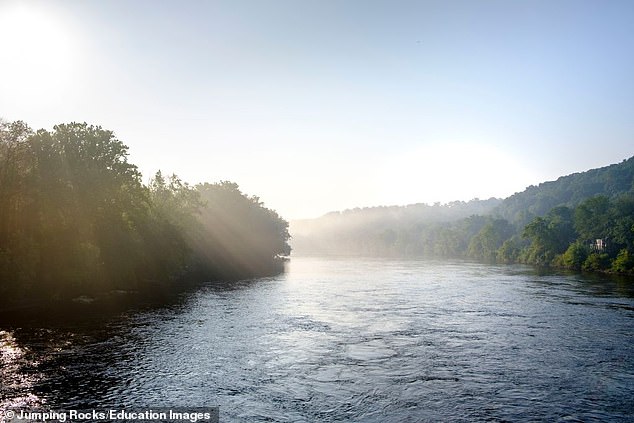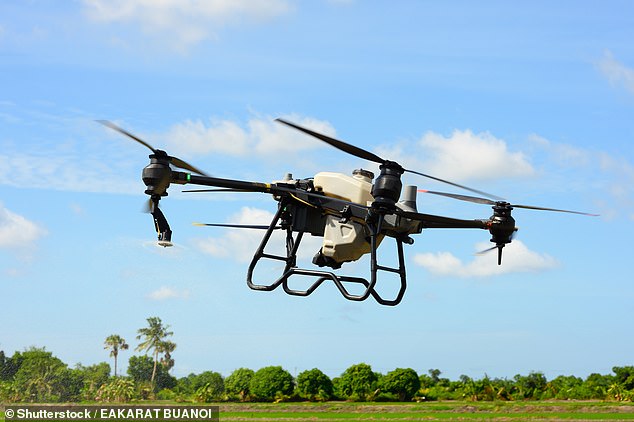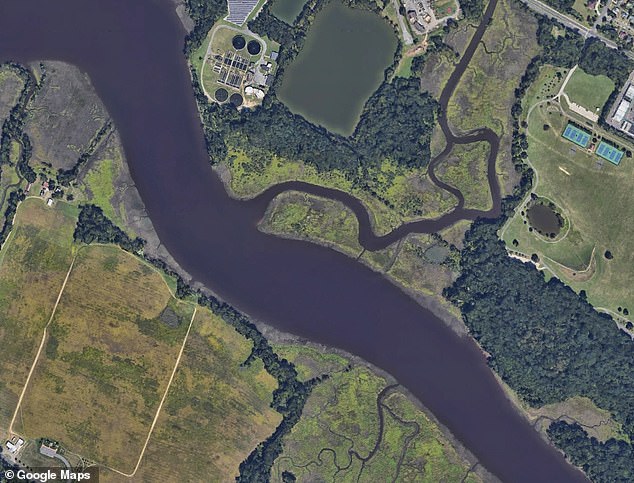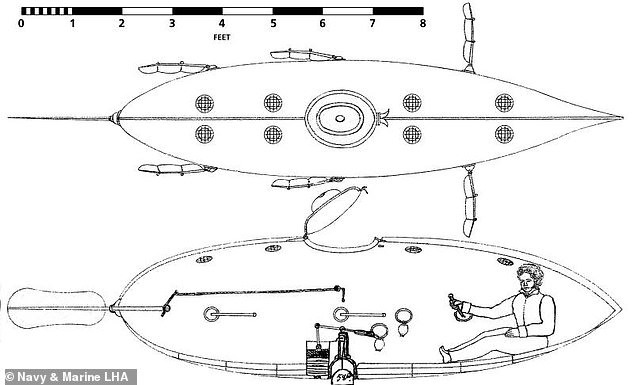A legendary Civil War-era submarine that has been missing for more than a century may have been located by a drone in New Jersey.
Equipped with a magnetometer, essentially a huge metal detector, a drone flying over Rancocas Creek detected a magnetic anomaly that matched what would be expected from the iron-hulled ship known as The Alligator Jr.
Although it is too early to be certain that it is the Alligator Jr., the location of the anomaly is consistent with the research of local historian Alice Smith, who believes that the submarine was sunk or abandoned somewhere along the creek. in 1861.
If the drone were to find the Alligator Jr., experts say the “historical” significance of the discovery would be enormous.
Built in 1859 by French inventor Brutus de Villeroi, the Alligator Jr. was probably 30 feet long and weighed several tons.
Researchers named the missing ship Alligator Jr. because it served as the prototype for the first U.S. naval submarine, the Alligator, which sank in 1863 and has never been found.
Built in 1859 by French inventor Brutus de Villeroi, the Alligator Jr. was probably 30 feet long and weighed several tons.
Experts speculate that the crew propelled the ship by operating pedals, which turned the propeller.
According to the Philadelphia researcherThe submarine, which was one of the first of its kind, mysteriously disappeared in 1861, while en route to the Philadelphia Naval Base to conduct some tests.

The Alligator Jr., a legendary Civil War-era submarine that has been missing for more than a century, may have been found by drone in New Jersey
Delaware Harbor Police were frightened by the futuristic ship and confiscated it, calling it an “infernal machine.”
What happened next to the submarine remained an inscrutable enigma for historians and archaeologists.
The Alligator Jr. was eventually rumored to be in the care of its inventor, de Villeroi, who placed it on the south Jersey side of the Delaware, where it was forgotten or deliberately sunk in the mud.
But soon, historians like Alice Smith became interested in the ship’s final whereabouts.
For two decades, Smith searched tirelessly for the submarine. Her research led her to a location in Rancocas Creek.
Although several searches of the area over the years proved fruitless, Smith did not give up hope.

Equipped with a magnetometer, essentially a huge metal detector, a drone flying over Rancocas Creek detected a magnetic anomaly that matched what would be expected from the iron-hulled vessel (file image)
He raised funds online to hire RETTEW, an engineering firm that had an impressive magnetometer.
Smith had them fly the drone over where he suspected the submarine was, and soon detected the anomaly.
“It’s been a 20-year adventure and an extremely enjoyable one,” Smith, president of the Riverside Historical Society, said. Philadelphia researcher.
‘I would like to accept congratulations, but I think we are at a point where some additional steps need to be taken and I have some mixed emotions.
“Still, this is probably the best report I’ve received in 20 years.”
Vince Capone, a sonar technology expert with decades of experience searching for shipwrecks, said they should employ radar technology to get a clearer idea of what’s down there.
“There is very good evidence that there is a mass of iron in the swamp, and the area roughly corresponds to some of the evidence that Alice has gathered,” Capone said. “But it is not conclusive that it is the submarine.”

For two decades, Smith searched tirelessly for the submarine. Her research led her to a location in Rancocas Creek.
James Delgado, a prominent maritime archaeologist, said that if the Alligator Jr. were indeed discovered, it would be “not only historically significant, but also archaeologically significant.”
He noted that the Alligator Jr. was created at a time in the 19th century when countless inventors around the world were fighting to patent underwater technology.
“There aren’t many of these things left,” he said.
‘Many were made, but how many survived? Very few. I mean, there are only a handful.

